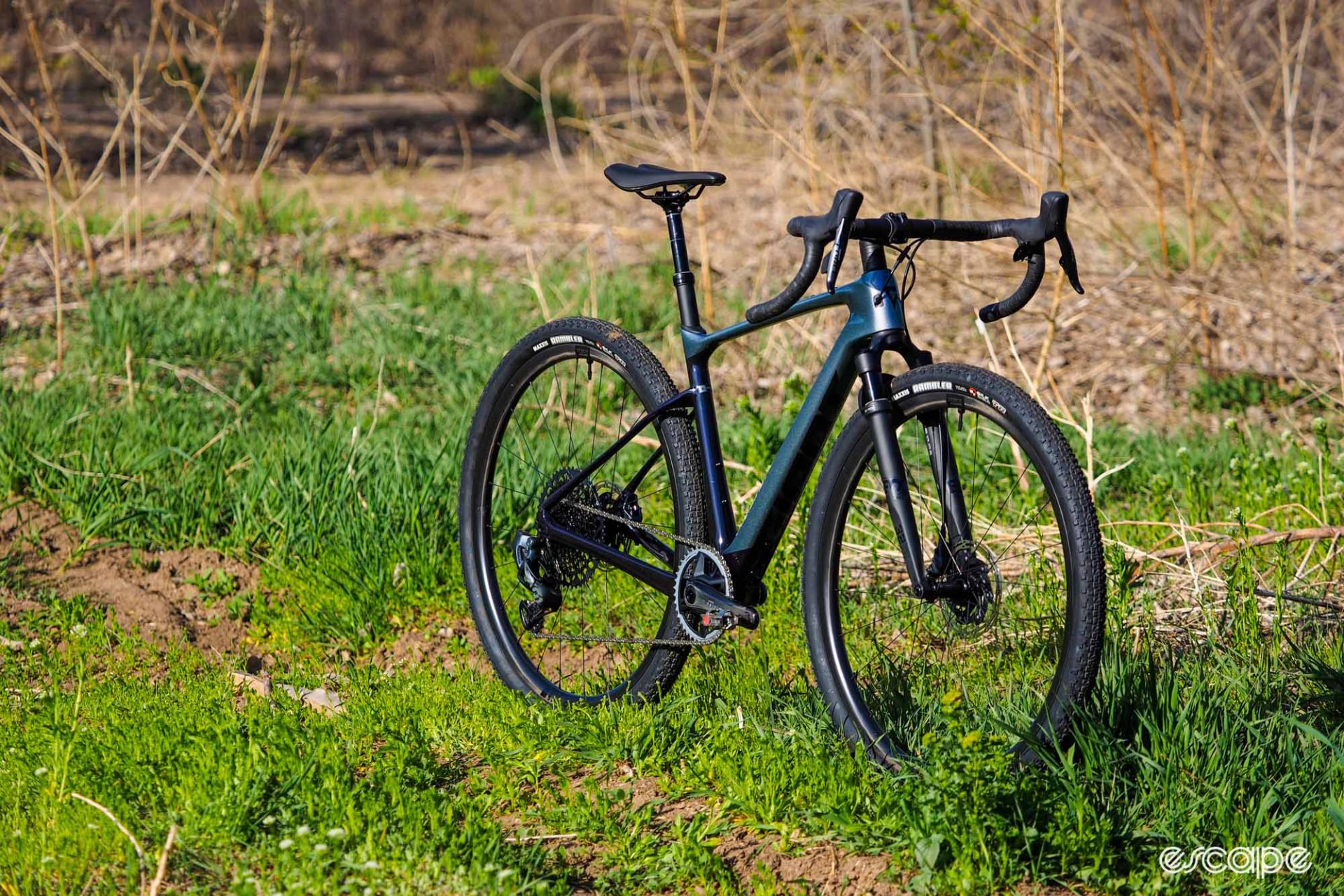In the broad spectrum of gravel bikes, you’ve got your light-and-aero go-fast models at one end, your heavier and burlier adventure-type rigs at the other, and all sorts of variety in between. The Giant Revolt X sits somewhere toward the latter for sure with its suspension fork, suspension/dropper seatpost, and fat 50 mm-wide tires, but that also feels like oversimplifying things.
Having suspension at both ends definitely adds a fair bit of weight, the big tires add some more (along with more than a bit of extra rolling resistance), and the geometry strays into mountain bike territory with its fairly generous trail figure and wide drop bars. Without question, this is one of those bikes that only sees tarmac so you can get to the good stuff. And while it’s slow going up, ohmygod is it a demon going down.
It’s a bit of a head scratcher, and I most certainly approached this review with more than a little bit of apprehension. But in the right conditions, the Revolt X has also proven to be surprisingly fast and entertaining little machine.
The short of it: Giant’s popular Revolt gravel bike, now with a suspension fork, a dropper seatpost, and fatter tires.
Good stuff: Proven handling, a plush ride, heaps of capability, heaps of versatility, mostly excellent components.
Bad stuff: Can’t hide the weight or rolling resistance, unrefined dropper seatpost, gratingly loud freehub ratchet, handling could be more daring.
More than just a letter
Giant debuted the latest generation of the standard Revolt gravel bike about 18 months ago,and it’s a heck of a machine, featuring lightweight construction, progressive geometry, excellent tire clearance, and impressive levels of versatility. Given the likelihood that the Revolt and Revolt X development timelines had a considerable amount of overlap, it would have been easy for Giant to design the former from the get-go with a suspension-ready geometry. Giant could have then added a suspension fork and dropper seatpost, tweaked the rest of the build kit, slapped a Revolt X logo on it, and called it good.
But that’s not what happened.
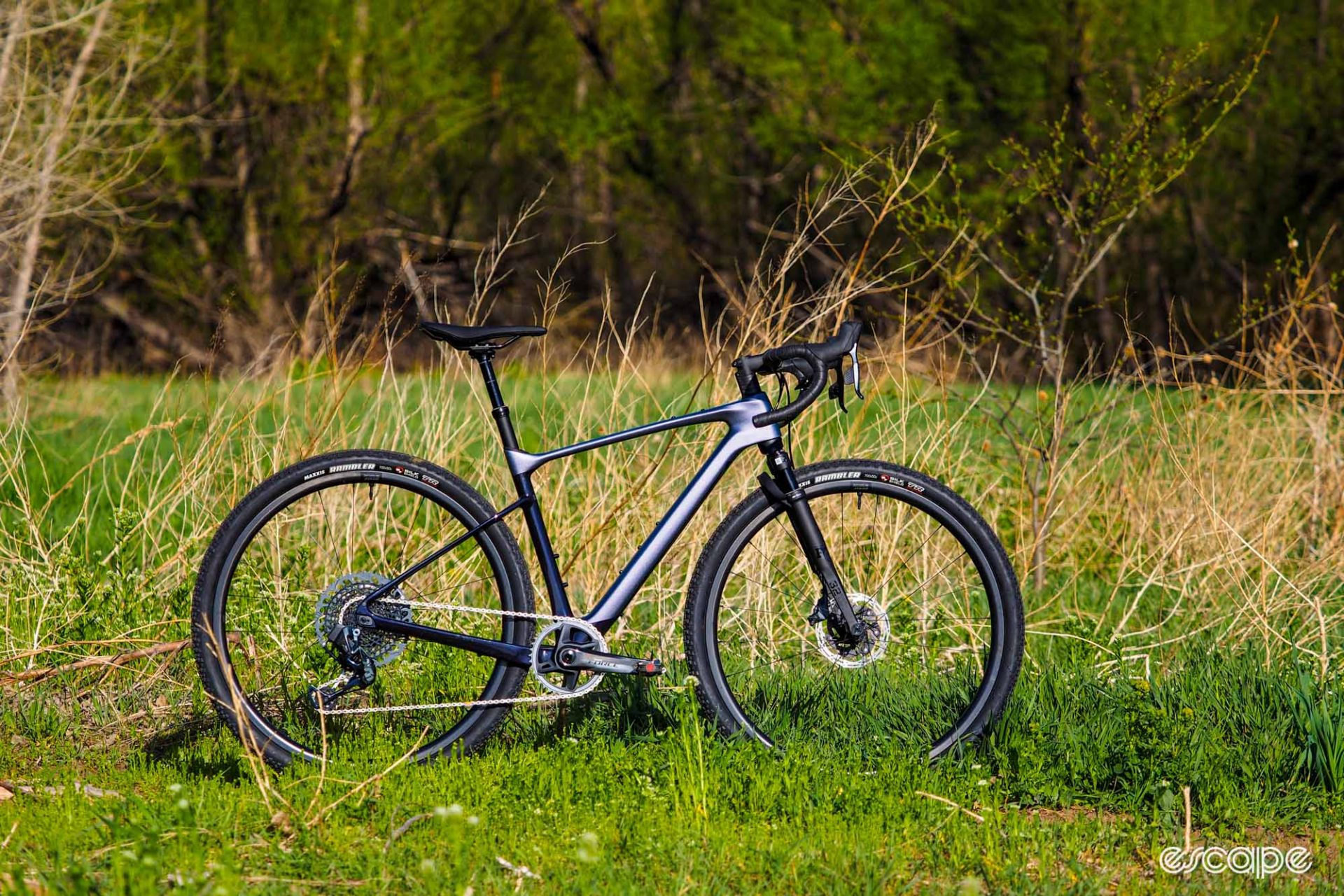
Despite the single-letter name change – and the seemingly very narrow niche this machine fills – Giant took the surprisingly bold step of building the Revolt X around a dedicated carbon frame.
The head tube is 35 mm shorter than what’s used on the standard Revolt to accommodate a 40 mm-travel Fox 32 Taper-Cast Performance Elite gravel suspension fork, and the down tube also has a pronounced curve at the head tube to clear the aluminum crown. Down below, Giant has raised the static bottom bracket height by 12 mm to account for the suspension, and interestingly enough, the stack height on the X is actually several millimeters lower than the standard Revolt. Otherwise, the rest of the frame geometry is essentially carried over, including the 425/435 mm adjustable-length chainstays, the head and seat tube angles, and wheelbase.
Tire clearance is also the same at up to 700×53 mm (in the long chainstay position).
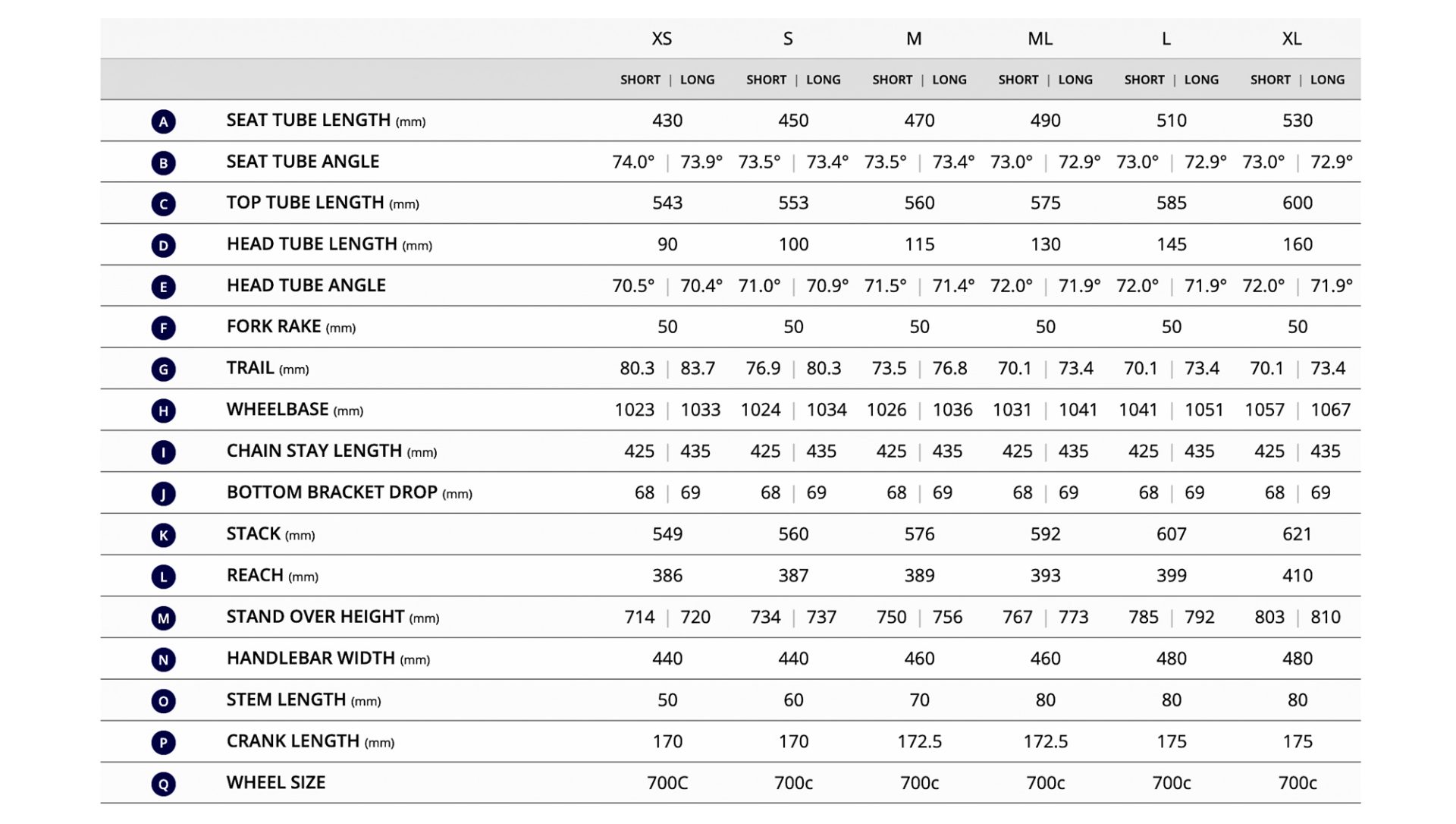
It’s the build kit where things really diverge.
Going along with that suspension fork is a Postmoderne combo dropper/suspension seatpost with 30 mm of suspension and 75-100 mm of drop, depending on size. The 2x drivetrains typically used on the standard Revolt swap to a 1x “mullet” setup on the Revolt X Advanced Pro 0, with a mix of SRAM Force AXS and XO1 Eagle AXS wireless electronic bits. The 40 mm-wide semi-slicks on the standard Revolt also bump up to knobbier and more heavily reinforced 50 mm-wide Maxxis Ramblers on the Revolt X, and handlebars are 2 cm wider across the board.
Given all that extra hardware, the Revolt X Advanced Pro 0 isn’t exactly a featherweight, coming in at 9.78 kg (21.56 lb) for my small-sized tester without pedals or accessories – 1.67 kg (3.68 lb) heavier than the Revolt Advanced Pro 0. And that’s with the benefit of Giant’s reasonably light CXR X1 26 mm-wide carbon wheels, too.
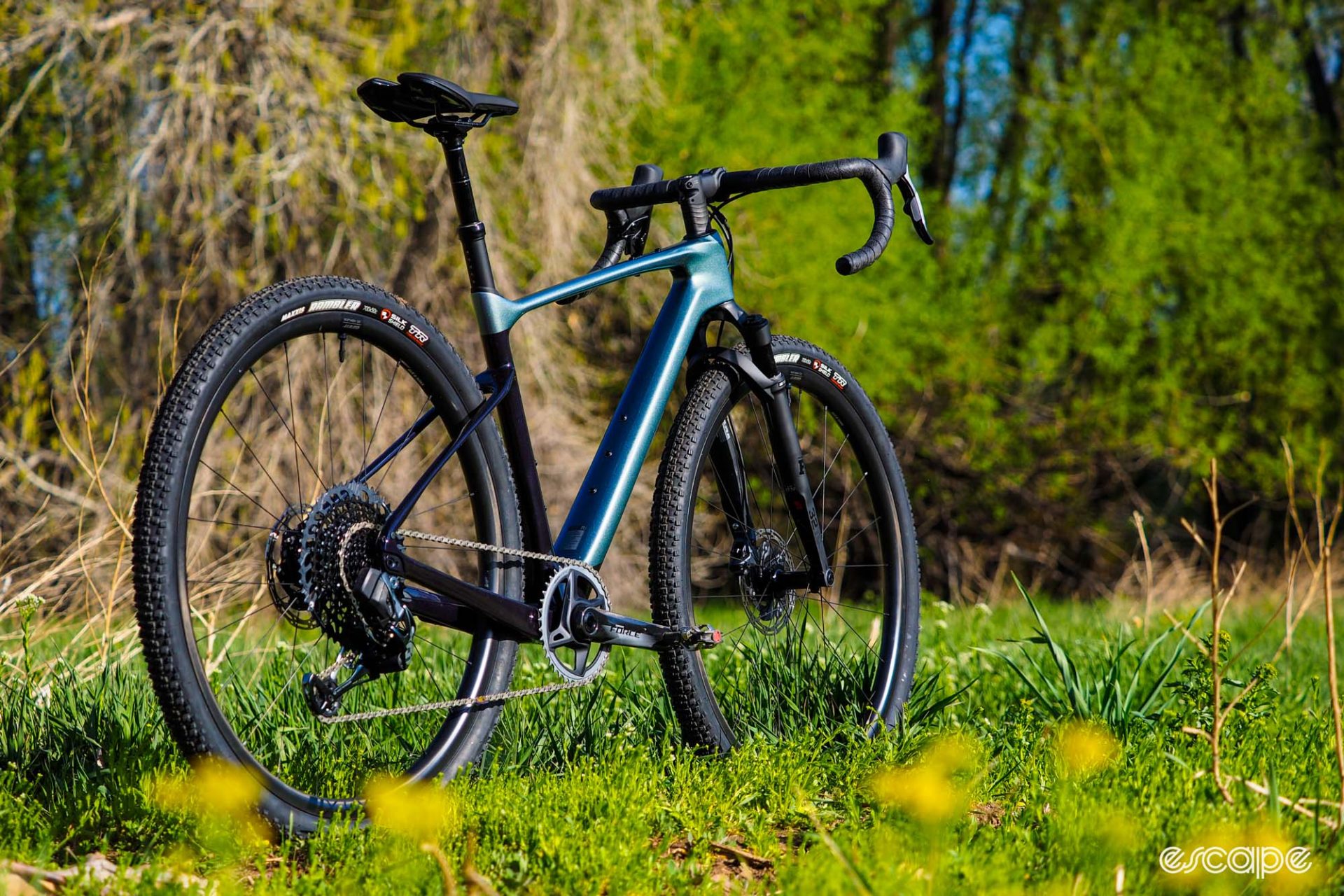
All of that extra suspension hardware also adds extra at the checkout counter, as the US$8,500 / AU$9,000 retail price for my Revolt X Advanced Pro 0 is also a substantial US$2,100 / AU$1,000 more than the unsuspended Revolt Advanced Pro 0 (both are the top offering in their respective lines; Giant offers the Revolt X range in the UK and EU, but not this particular model).
I found the conventional Revolt Advanced Pro 0 to be a superb all-around gravel bike: light, great ride quality, balanced, versatile, quick. So how does adding all that stuff change things? Is it somehow better? And is it worth the extra cost?
As it turns out, that depends on your definition of “better”.
Heading even further off the beaten path
Ok, let’s first address the elephant in room. Yep, the Revolt X is heavy for a gravel bike at this price range, and I’d be lying if I said I didn’t feel it. The extra static weight is noticeable when heading uphill, when accelerating, when turning – basically any time you’re trying to change either speed or direction. But arguably even more noticeable are the extra rotating mass and additional rolling resistance of those meaty Maxxis Rambler tires, which each weigh about 220 g more than the narrower and much faster-rolling 40 mm-wide Maxxis Receptor tires Giant fits to the more conventional Revolt Advanced Pro 0.
As you’d expect, then, the Revolt X felt a little slow and cumbersome on paved surfaces. It just doesn’t want to go fast. And when heading uphill, it’s a good thing it includes that huge 10-52T mountain bike cassette because there’s a good chance you’ll need to use it.
But that’s not really the point.

As mentioned many times before, gravel exists on a spectrum, and the Revolt X exists to tackle the terrain where a proper XC hardtail might very well be more capable, but also more boring.
One of my more rigorous gravel test loops covers about 48 km (30 mi) of distance and 580 m (1,900 ft) of climbing. By the numbers, it’s nothing outrageous. However, it’s only about 10% tarmac, 60% smoothish gravel, and 30% stuff that I would consider to be somewhat typical XC MTB terrain.
On the paved segments, the Revolt X performs about how you’d expect. It adopts a somewhat leisurely attitude to the task, getting it done without a ton of eagerness or verve. Sorry, Maxxis, but those big ol’ Ramblers are just plain slow.
Things get better once you hit the gravel. The Revolt X still comes off as overkill to an extent here, but at least you’re rewarded with a distinctly cushy ride. As I’ve experienced previously, the performance of that Fox suspension fork is spot-on, with sufficient suppleness to ably tackle washboard and medium-sized rocks and roots, but also enough support to keep it from bobbing all the time while pedaling. And while the combo dropper/suspension seatpost seems hokey, it does work. That 30 mm of travel isn’t much, but it’s still enough to take the sting out of impact harshness that might otherwise make its way through to the saddle.
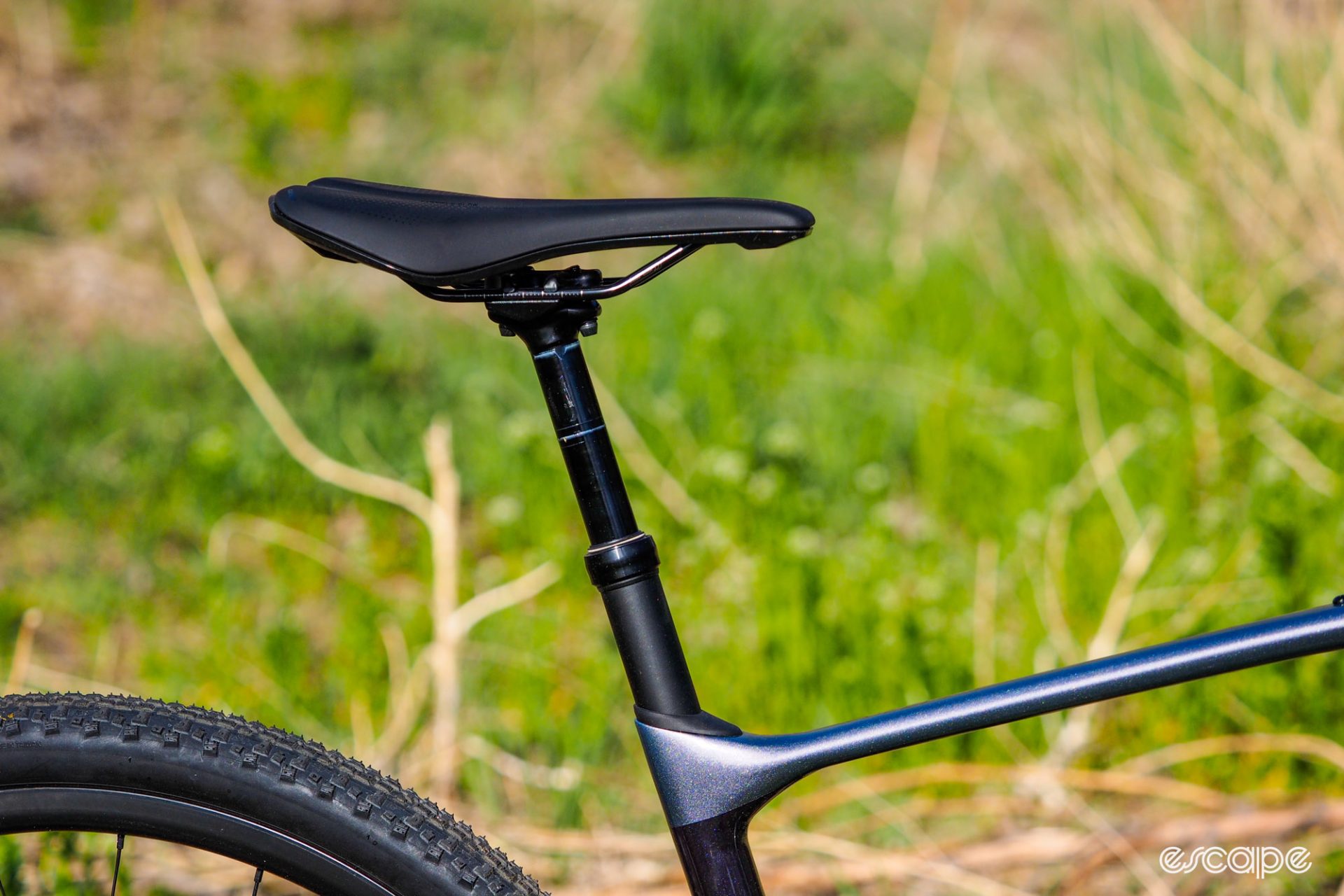
It’s on the rougher stuff where the Revolt X shines brightest.
The trail segments on that mixed-surface loop I mentioned are well-suited for a hardtail or short-travel full-suspension mountain bike, but I wouldn’t describe them as fun, and they’re certainly not worth the tarmac slog to get there on mountain bike knobbies.
But by comparison, the Revolt X is happier dealing with some asphalt and easily dispatches the more typical gravel-type terrain, and then is just an absolute hoot on those otherwise boring trails. Tearing through those sections at speed on the Revolt X demands skill and attentiveness, as well as a level of mental engagement that you just don’t need on a proper mountain bike. Is it the ideal tool for the job? Well, no, but it reinforces the idea that being moderately underbiked can be awfully fun.
The Revolt X is also surprisingly fast on that sort of terrain, almost to the point where it makes up for the slower rolling on tarmac and hardpacked dirt compared to a conventional gravel bike that would struggle more on rougher bits of trail.
Things got even more interesting when I swapped the stock 50 mm-wide Maxxis Ramblers for a set of lighter and faster-rolling 40 mm-wide Challenge Getaway XPs. One might rightfully debate the wisdom in pairing those tires on a bike like the Revolt X, but I’d argue that one of the beauties of front and rear suspension on a gravel bike is that it lets you get away (no pun intended) with running a speedier tire without losing too much capability.
And oh boy, do those tires change the personality of the bike.
That one change instantly removed about 400 g of rotating weight and infused the Revolt X with a far more eager feel: quicker to accelerate, quicker to change direction, less laborious to climb.
In fact, just swapping tires made the Revolt X so much more fun to ride all around that part of me wonders why it doesn’t come this way from the factory. Granted, the narrower tires aren’t quite as bomber as the stock 50s on rocky terrain – and the combination of narrower tires and suspension would invariably make a lot of people scratch their heads – but the fact remains that it’s a surprisingly capable setup.
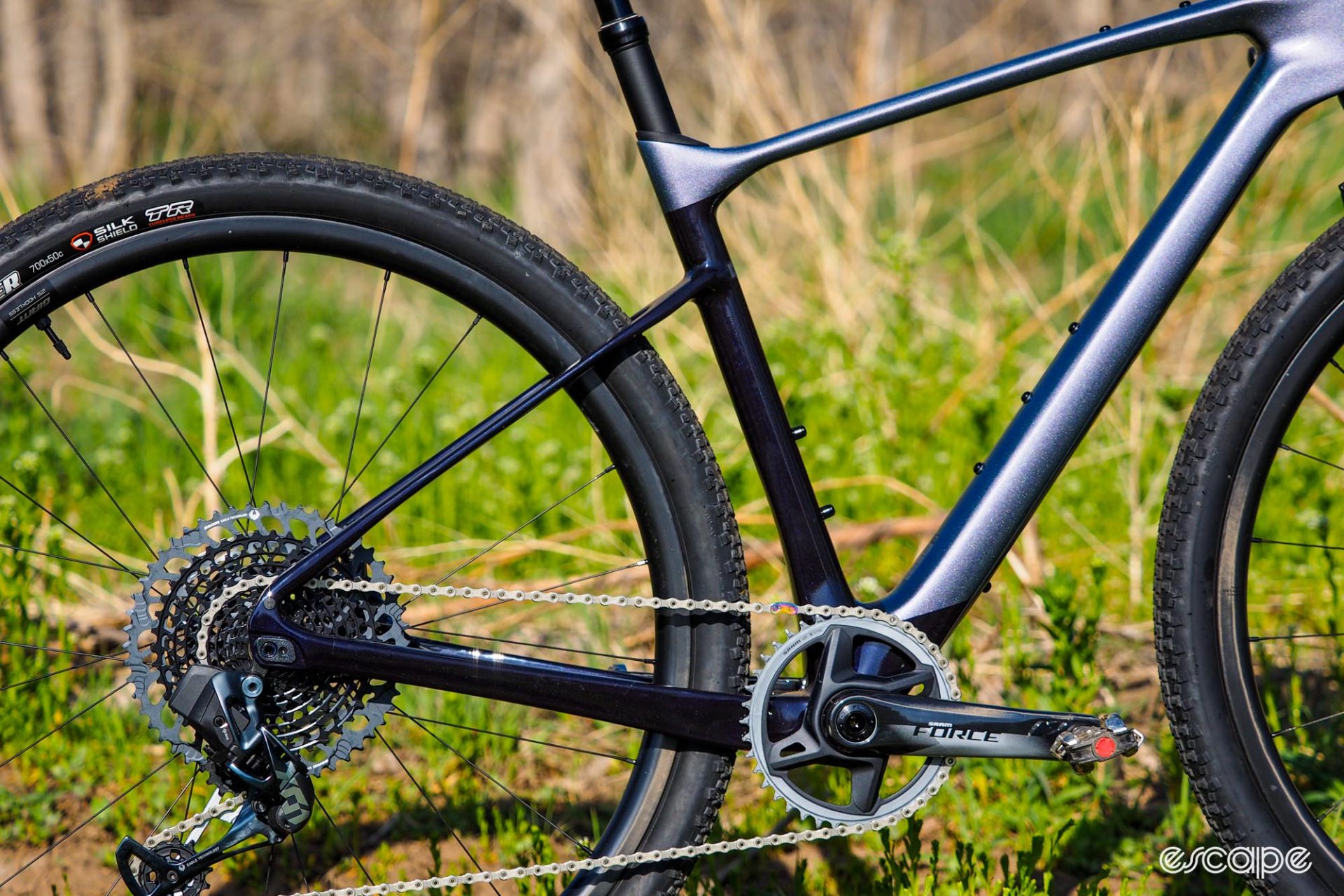
Nowhere was that capability demonstrated more overtly than on one particularly sinuous dirt descent that I’ve done dozens of times. It’s fast with a bunch of loose switchbacks that lure you into going fast before mercilessly dumping you on the ground. Although the footprint was fairly narrow with those Challenge tires, there was better grip from the tackier rubber, and the dropper post also allowed for much more aggressive body position (including laughably easy supertucks on straighter bits). The result was a downhill PR for me, and with enough stickiness through the corners that I knew I could have gone much faster.
It was at that point the Revolt X started to make more sense to me. It’s not a go-fast gravel bike that you’d use for something like SBT GRVL or even Unbound Gravel, and it’s obviously not quite a mountain bike. But for that grey area in between, there’s enough capability baked into it that it feels almost irresponsibly fun. Want to go fast for an event? Toss some faster tires on it. Want to do some backcountry exploring? Max out that tire clearance and happily trundle along. It’ll never be light, but there aren’t too many gravel bikes out there that incorporate this amount of flexibility such that you can so easily make it what you need it to be on any given day.
Room for improvement
As brightly as the Revolt X shone in the right situation, there are still some things I think Giant could have done a little better.
For one, I found myself wishing for a more progressive frame geometry. While the standard Revolt dimensions are just about spot-on for general-purpose gravel riding, the Revolt X is obviously meant to handle more. I’d like to see a longer – and perhaps slightly slacker – front end that you could push a little harder through tricky sections of trail. If nothing else, I would’ve appreciated a longer front center if only to get rid of the slight amount of toe overlap I experienced.
There’s also a prominent shelf behind the bottom bracket shell that practically begs to accumulate mud and debris. Given the generally excellent clearances elsewhere, it seems a bit silly to leave this shape as is.
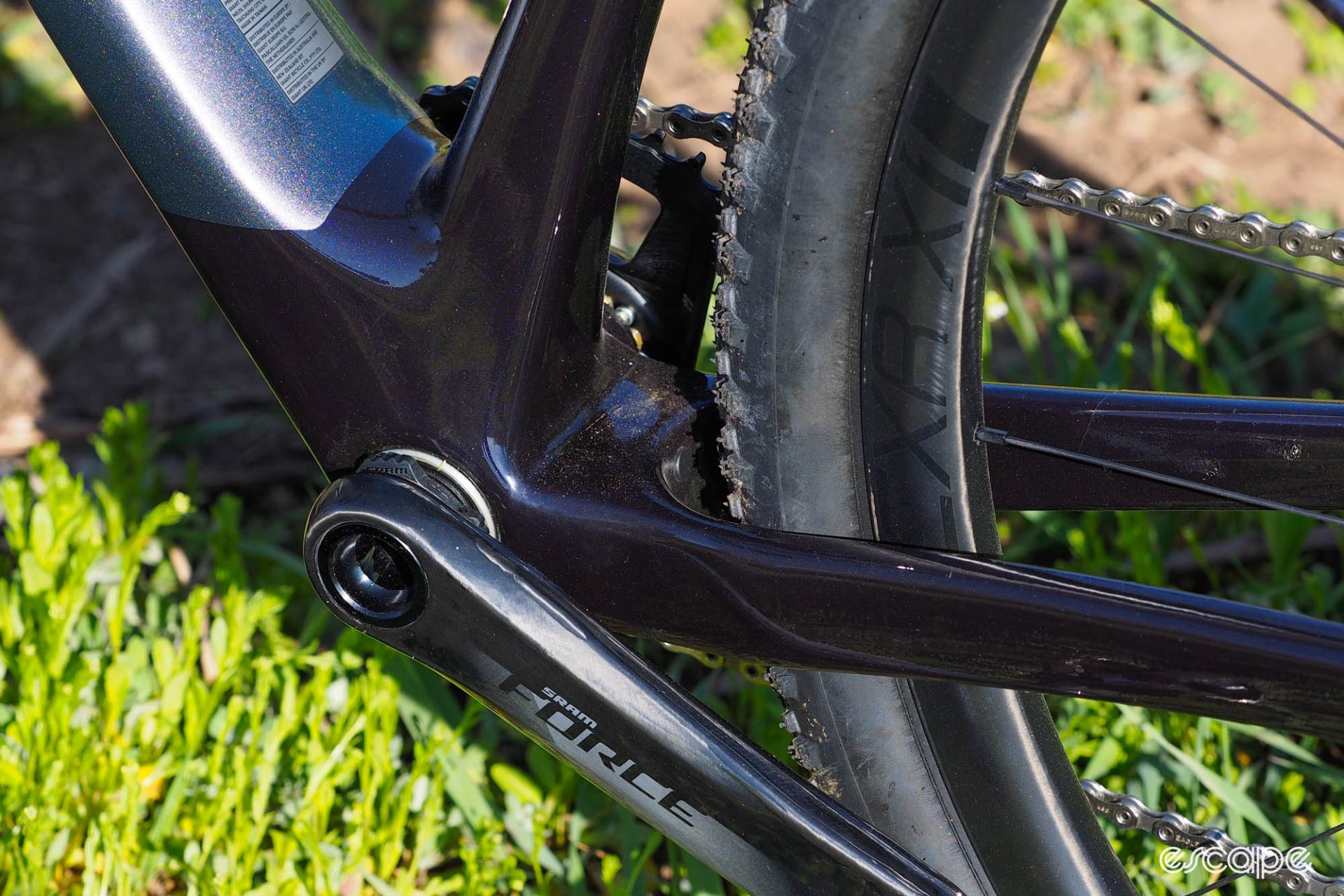
Spec-wise, there’s not too much to complain about.
The SRAM Force/XO1 Eagle AXS “mullet” wireless electronic drivetrain is an ideal choice for what the Revolt X is designed to do, offering heaps of range and excellent chain security with unflappably reliable shift performance. If you keep the battery charged and make sure the rear derailleur hanger is straight, the drivetrain will do exactly as you ask without objection.
The same goes for the matching brakes. I’d still like to see SRAM offer a lighter and snappier lever feel – not to mention a shorter stroke – but aside from those minor quibbles, there’s great power and pinpoint control. That bigger front tire contact patch perhaps also warrants a larger front rotor to match, though, as there were definitely times I found myself going a little faster than I should have been on terrain I was arguably under-equipped to handle properly.
I unfortunately had more mixed feelings on the wheels. Giant has come a long way with its in-house stuff, and the carbon rims used here felt just about spot-on: stiff but not too stiff, competitively light, easy to set up tubeless, and seemingly quite tough. Build quality was very good, too, and the conventional design will be easy to true if and when needed. But by god, is the Giant-designed star ratchet freehub design loud. A generous application of Dumonde Tech freehub grease helped a bit, but nowhere near as much as I wanted.

Unless you actively strive to keep other cyclists away from you, it’s loud enough that I’d urge anyone considering this bike to ride it first to gauge if you can handle the racket. No joke: riding buddies complained any time I coasted near them, and while I rarely had to use my bell on multi-use paths, I could have done without the dirty looks I got from walkers as I slow-rolled by. It’s truly obnoxious.
And while I generally liked the dropper/suspension seatpost, it’s lacking in polish. I wasn’t bothered too much by the slight bobbing that occurs while you pedal, but the rebound sometimes felt so forceful that it was like the bike was actively trying to buck me off, and the motion wasn’t as smooth as it should be. The matching remote isn’t great, either, with too much friction in the line from the tight housing bends and somewhat awkward ergonomics that never quite felt right to my fingers.
If I really want to nitpick, I would like to see a bit more padding in the bar tape, too. It’s pleasantly grippy stuff, but given the bike’s intention, it just doesn’t make sense to me to use something so thin here.
Not at all revolting
Even after testing it for weeks, I still look at the Revolt X and scratch my head a bit. Is it still a gravel bike? Is it a monstercross bike? Or is it basically just a bad mountain bike? I can’t decide if it’s all of those or none of them, but I also can’t deny that I often had a smile on my face while riding it.
Apply the “jack of all trades, master of none” descriptor here if you want; it certainly applies. But then again, there are also a lot of reasons why so many people carry a Swiss army knife around everywhere instead of a toolbox full of specialty items. Sometimes it’s good to know what you’re riding can handle whatever might come at you, even if it’s rarely the exact right tool for the job.
More information can be found at www.giant-bicycles.com.
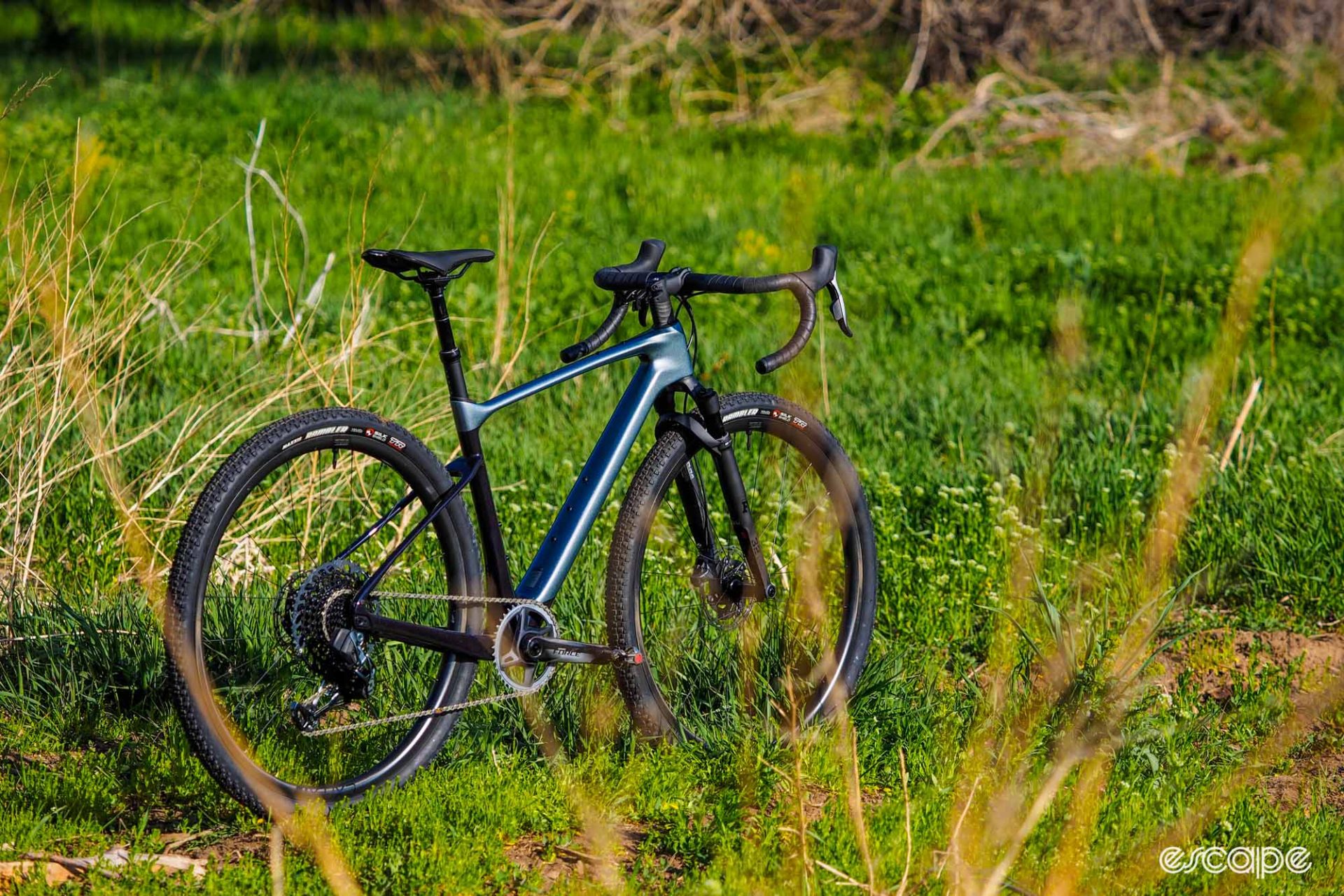
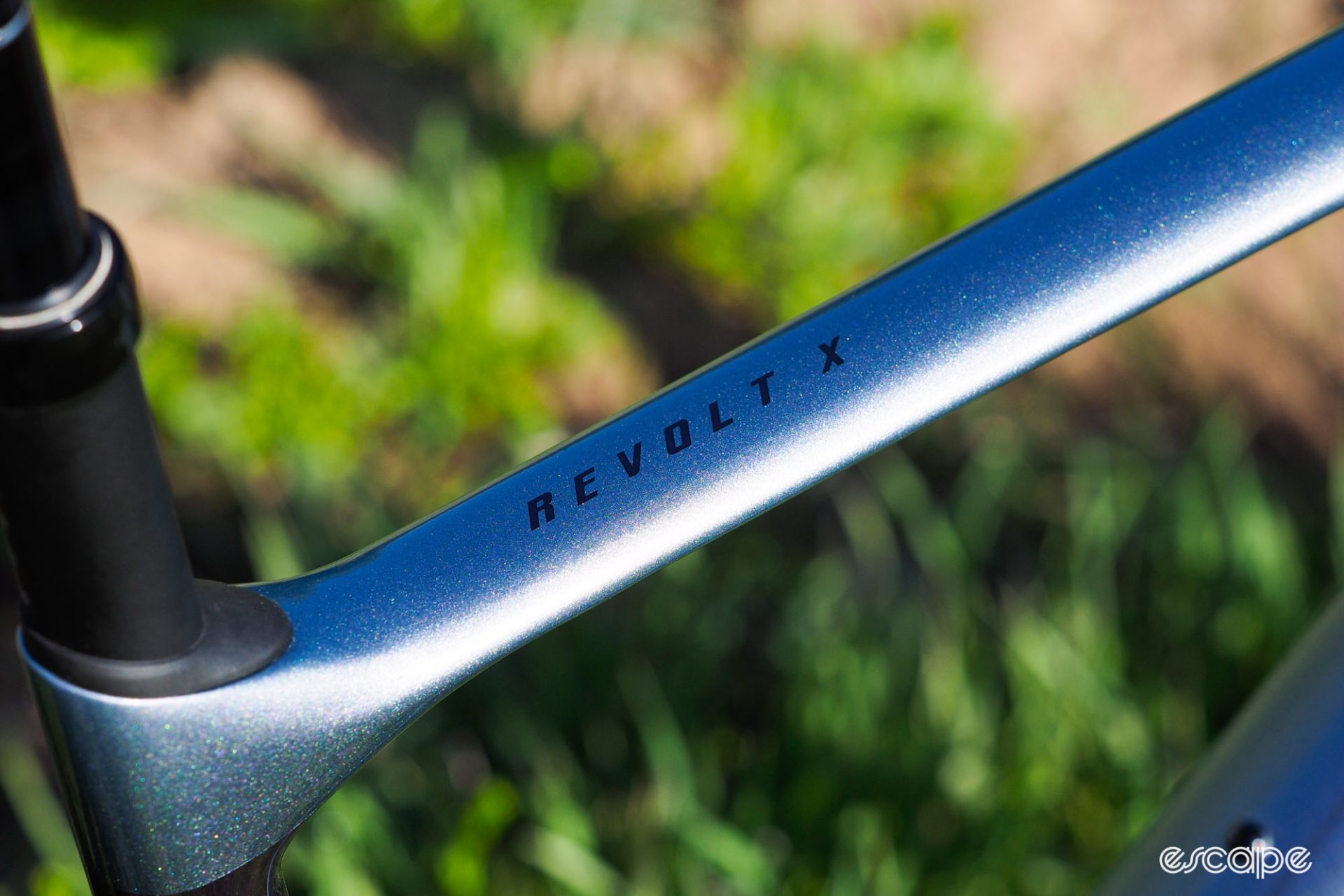
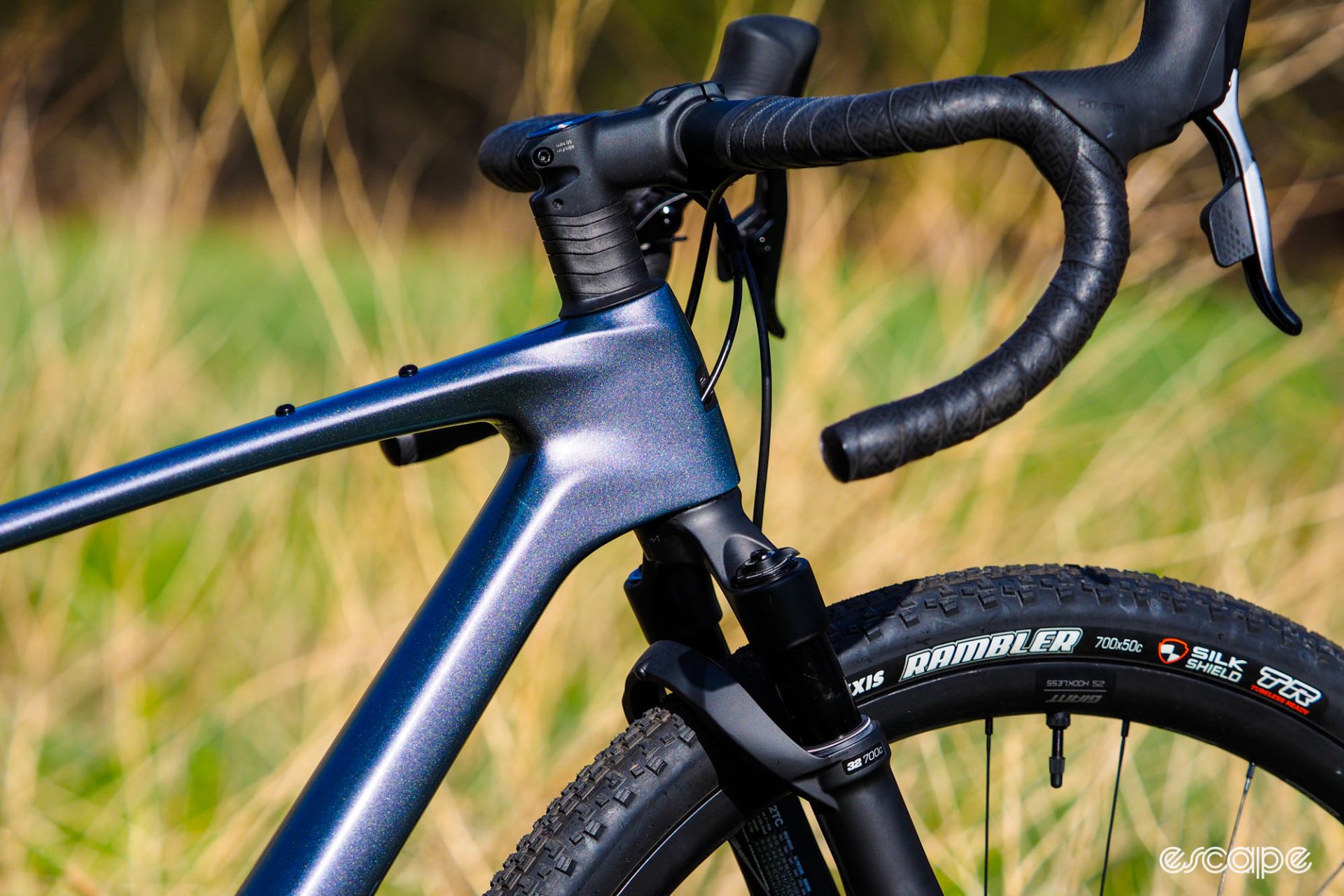


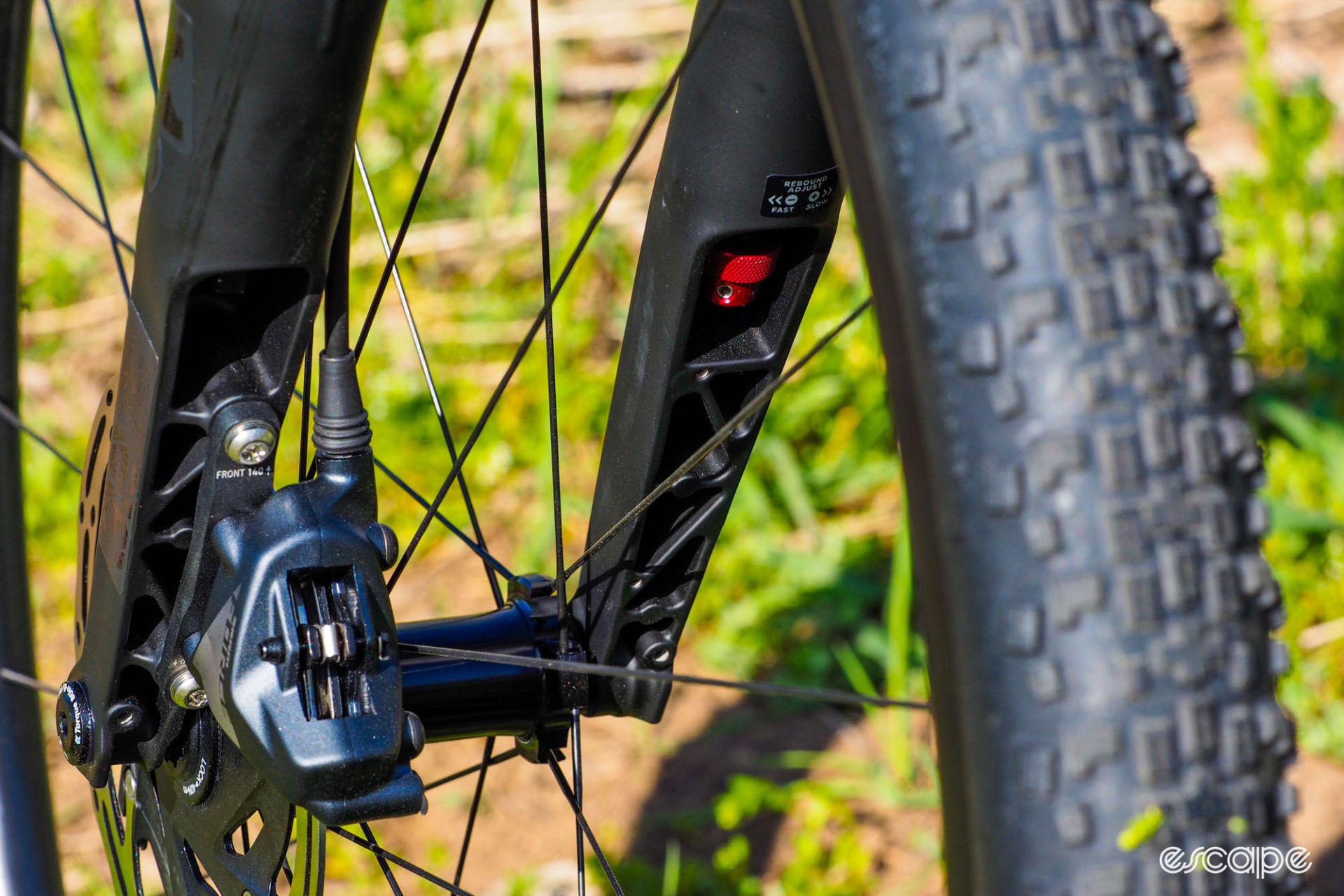

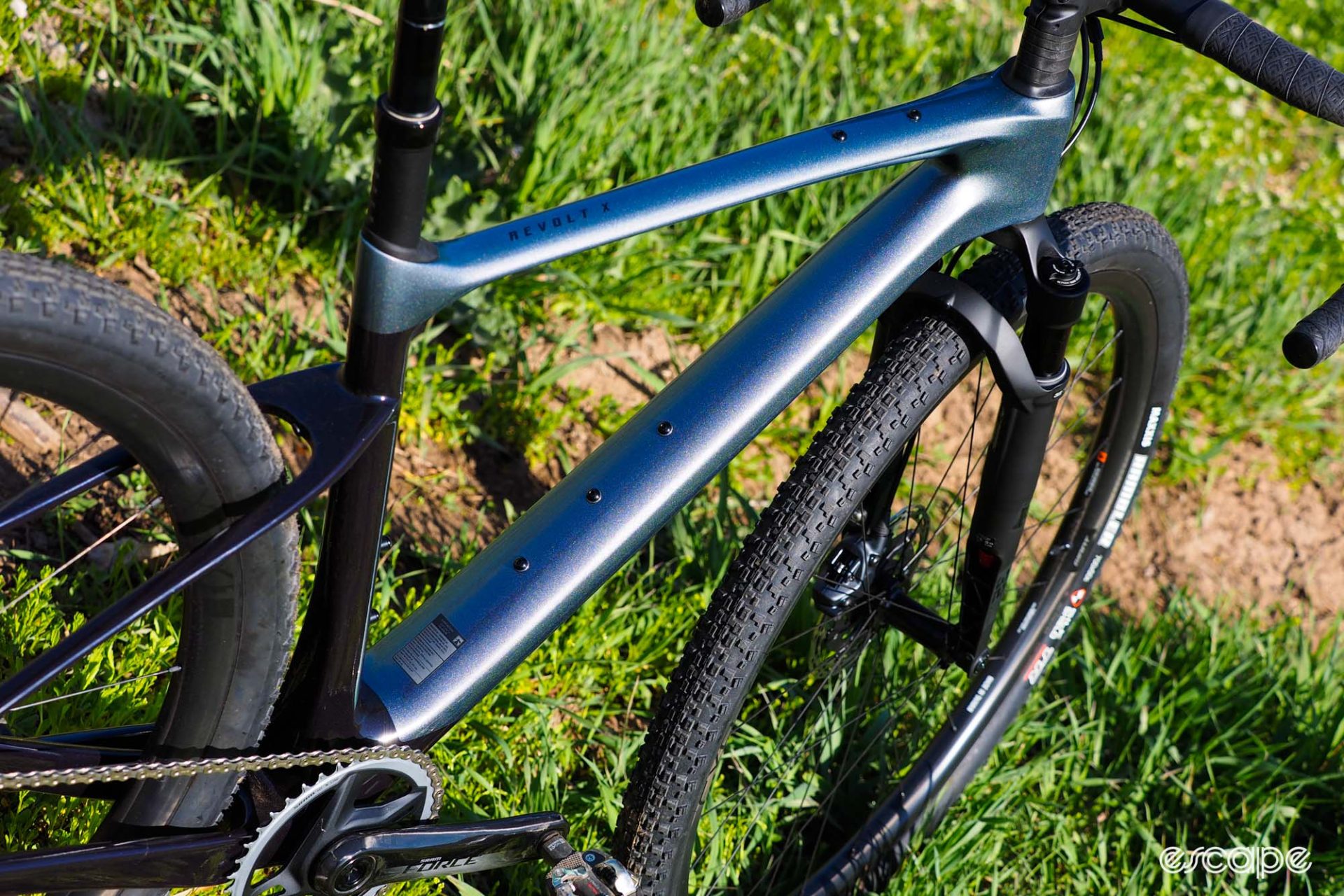



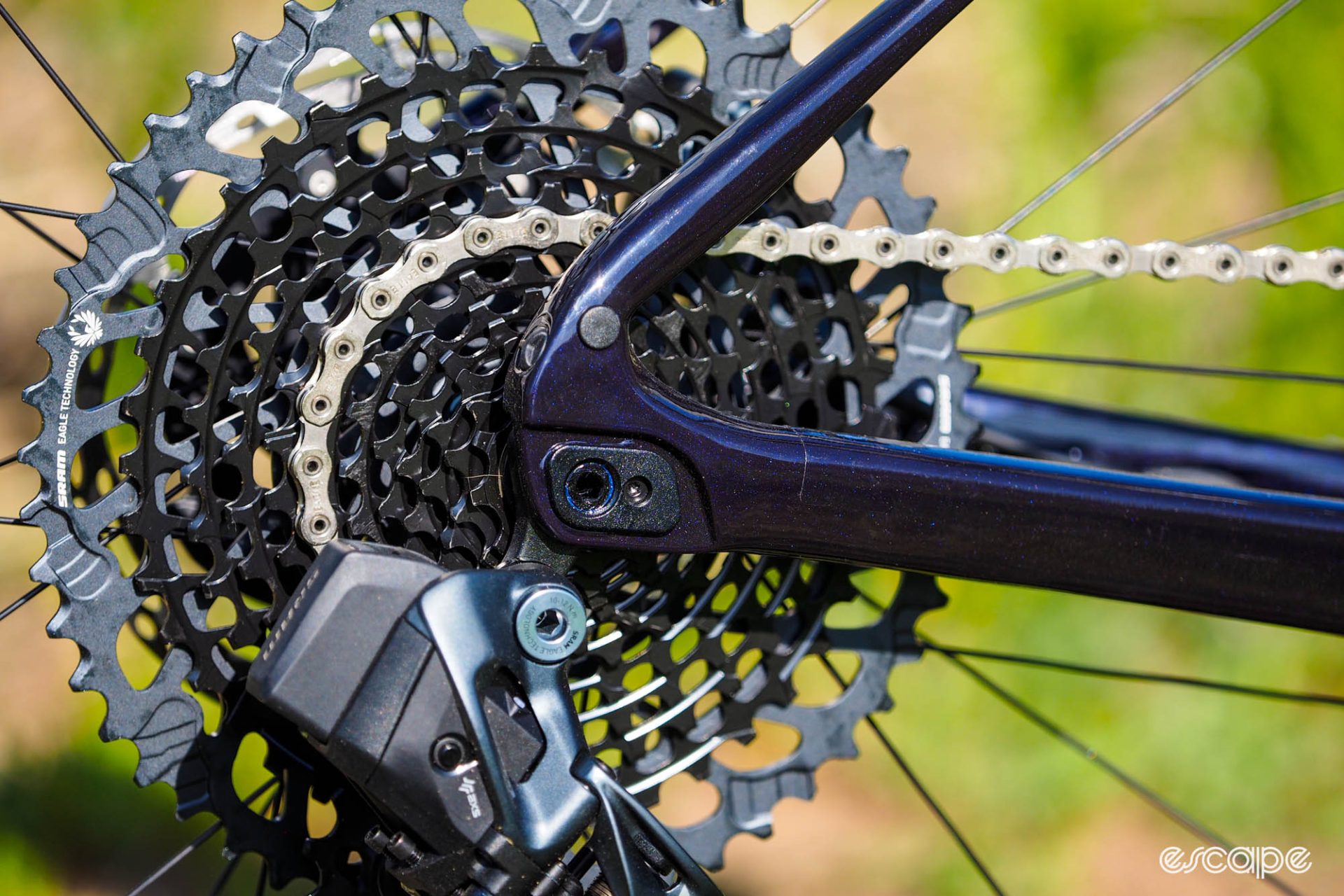
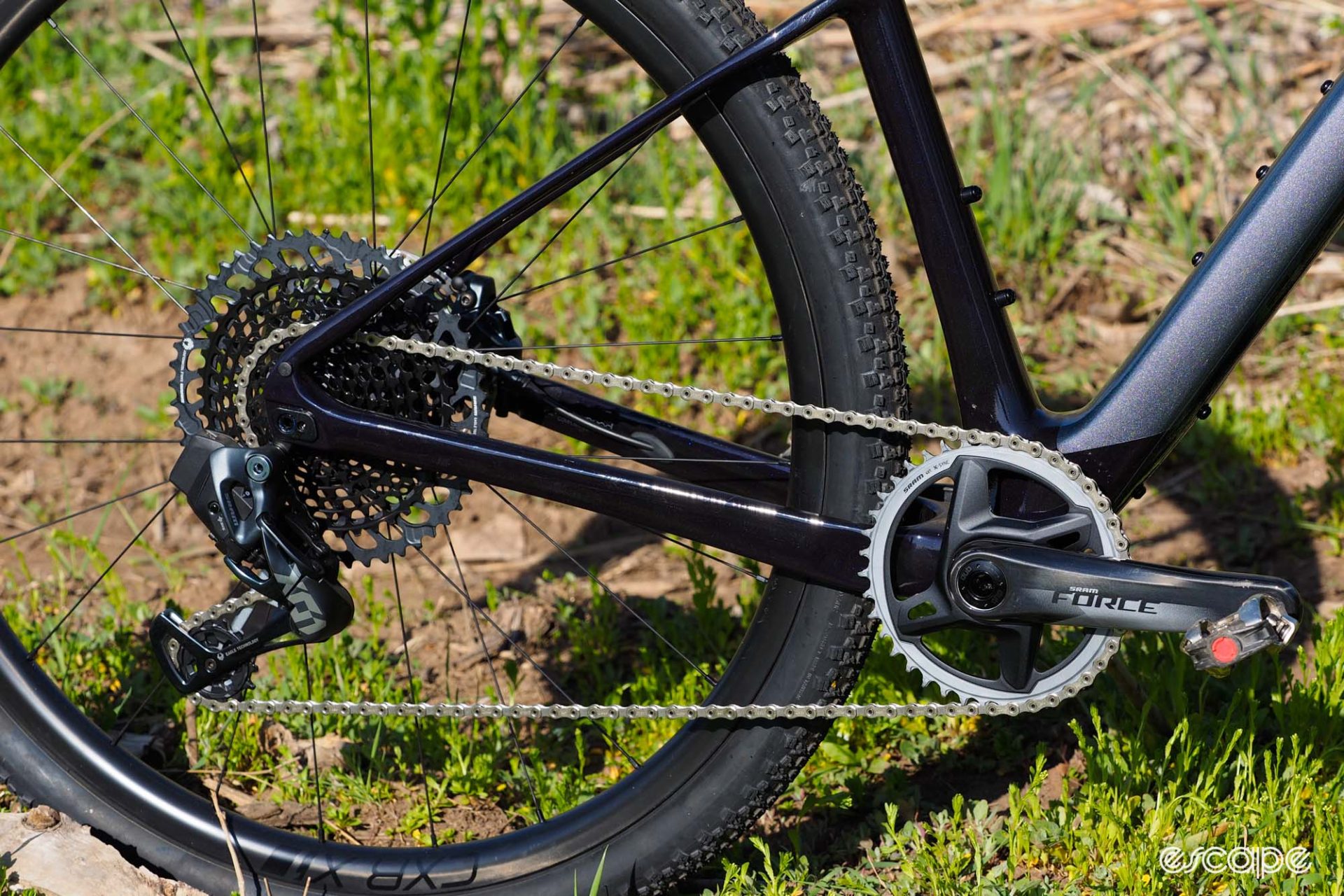

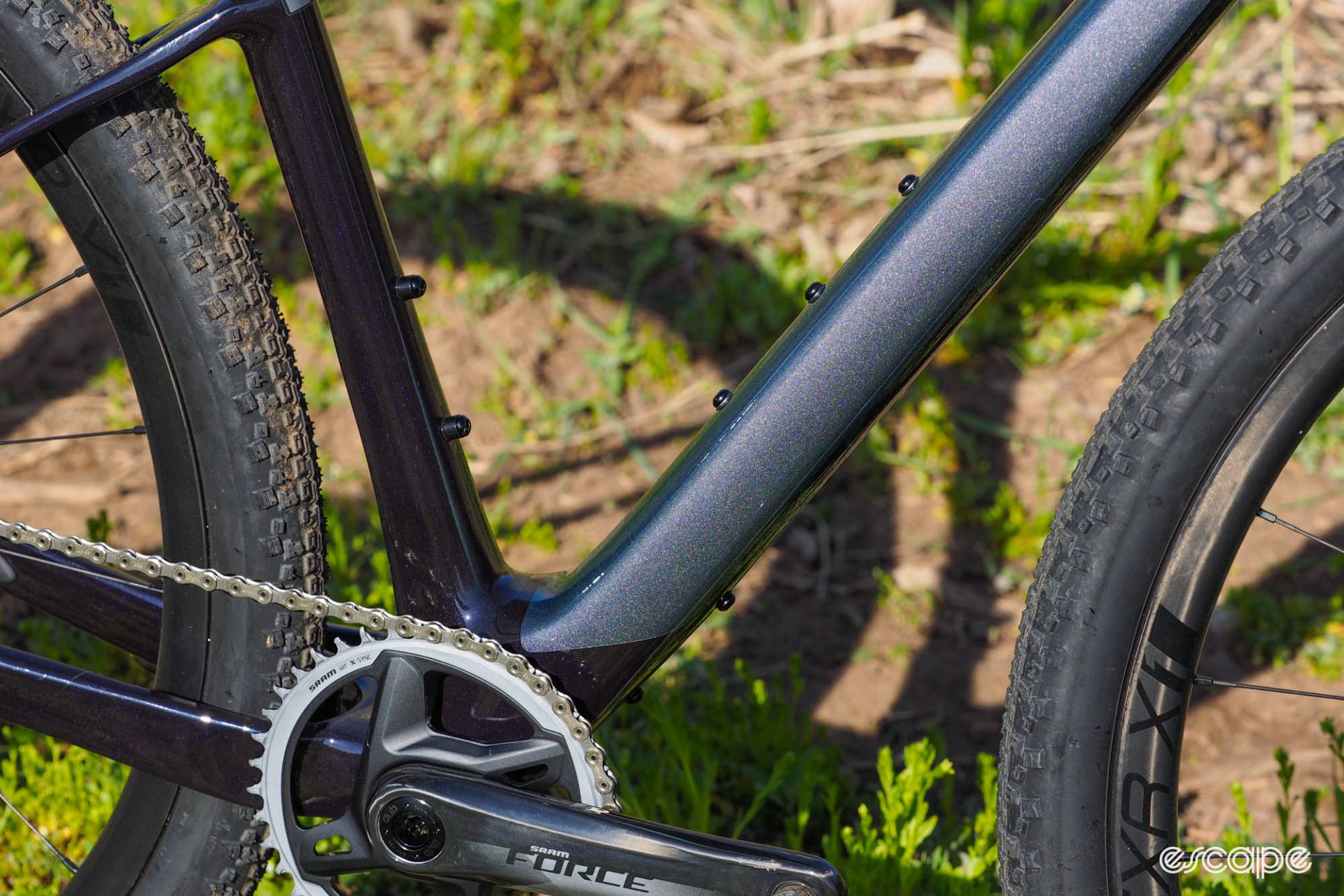
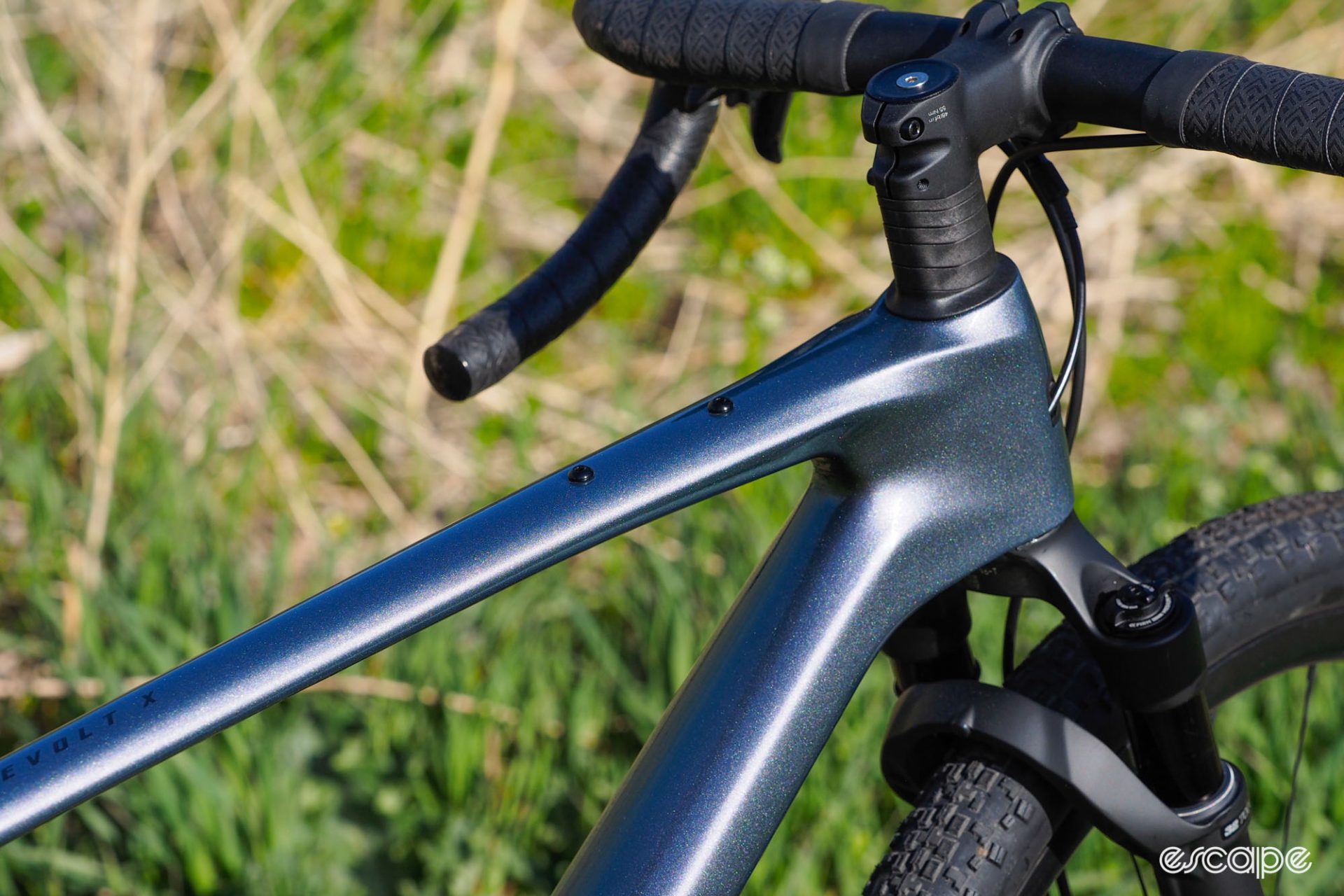

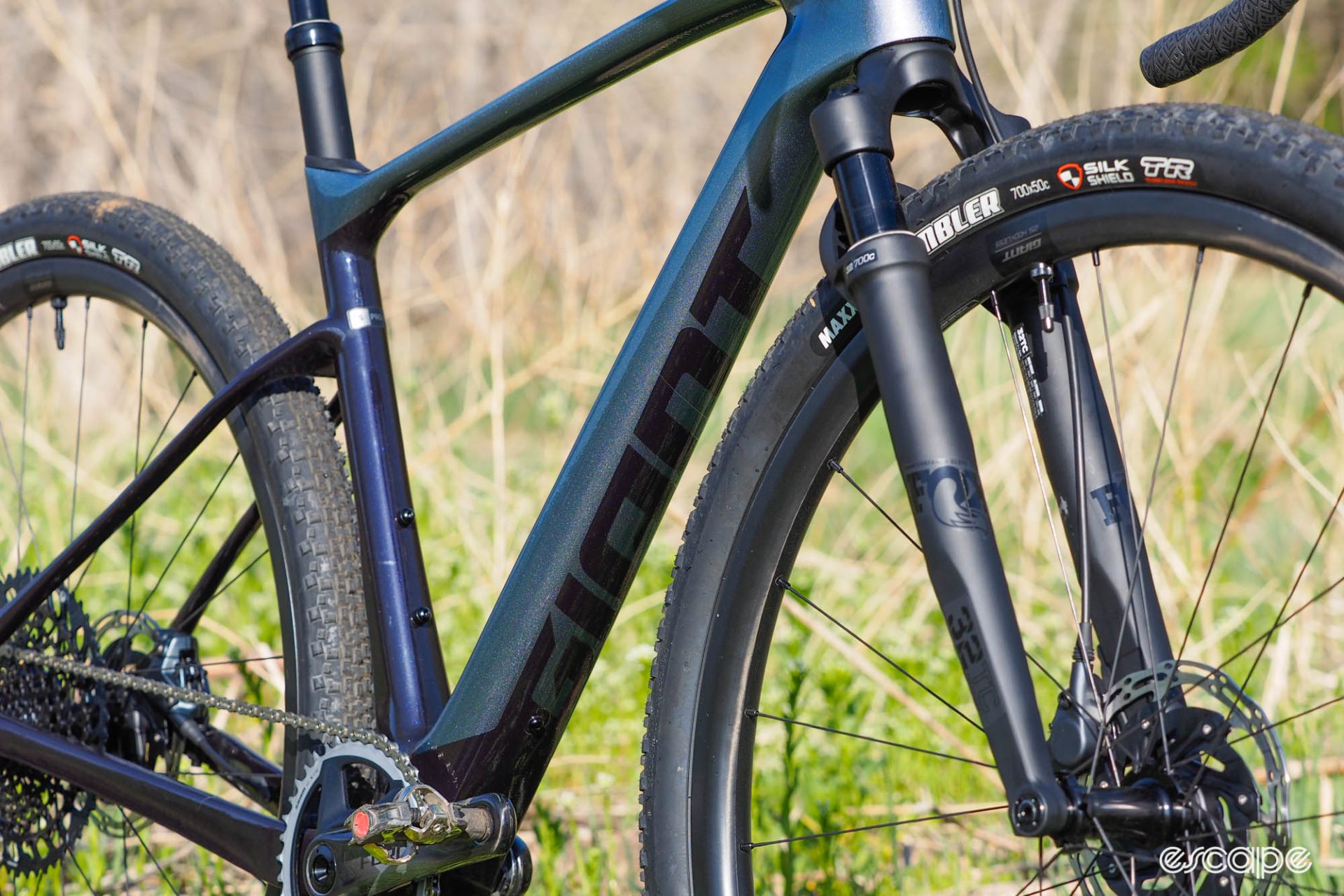
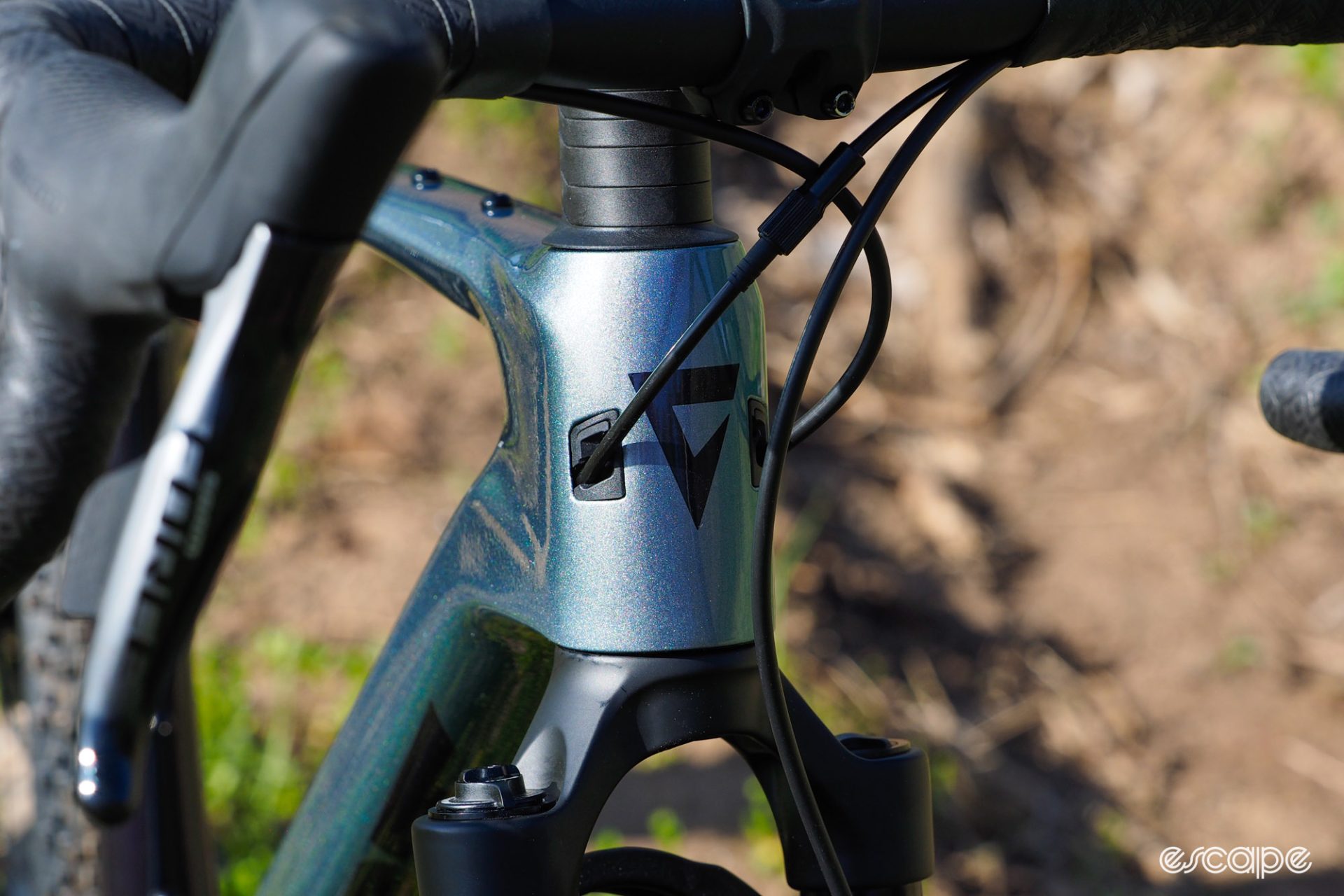
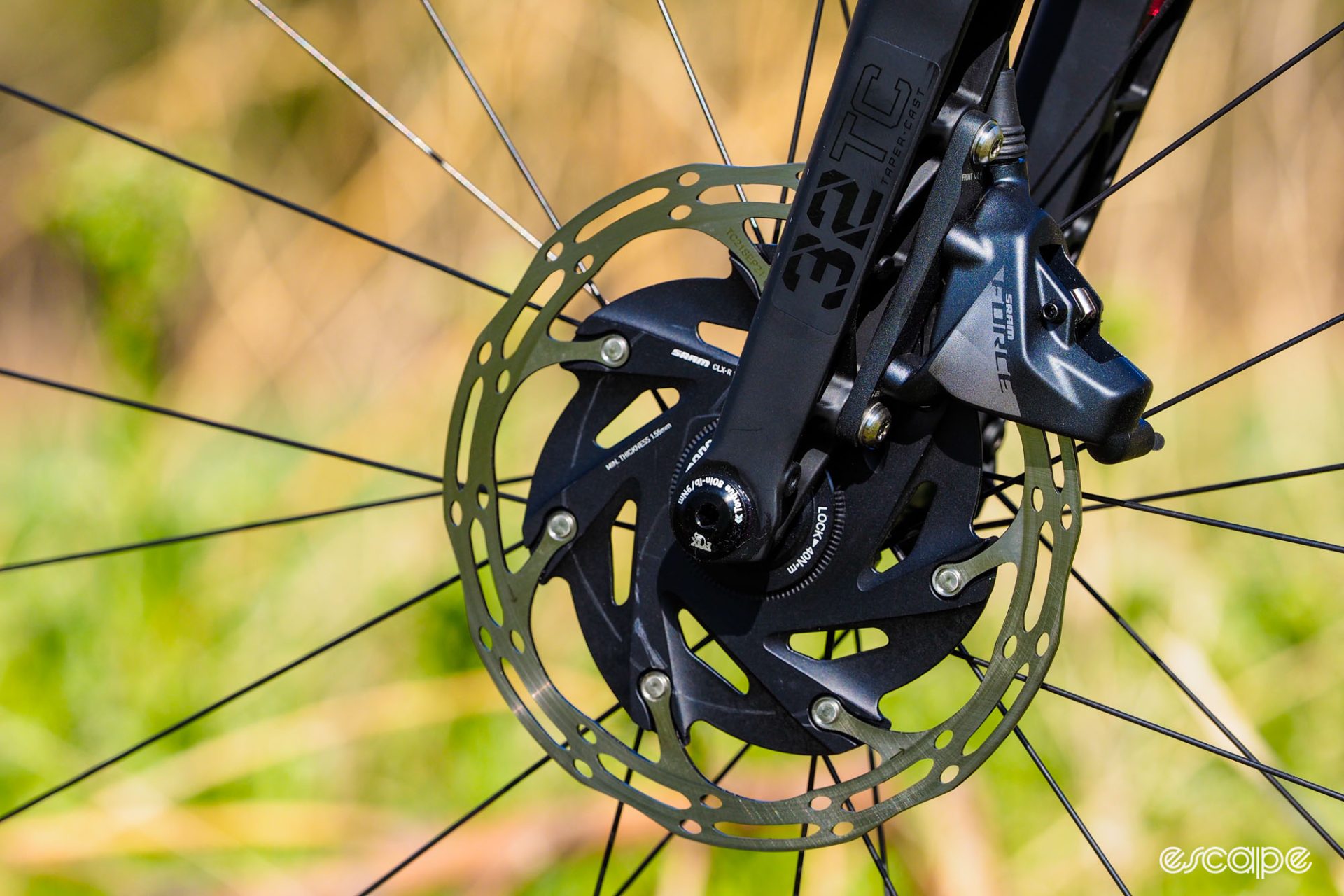
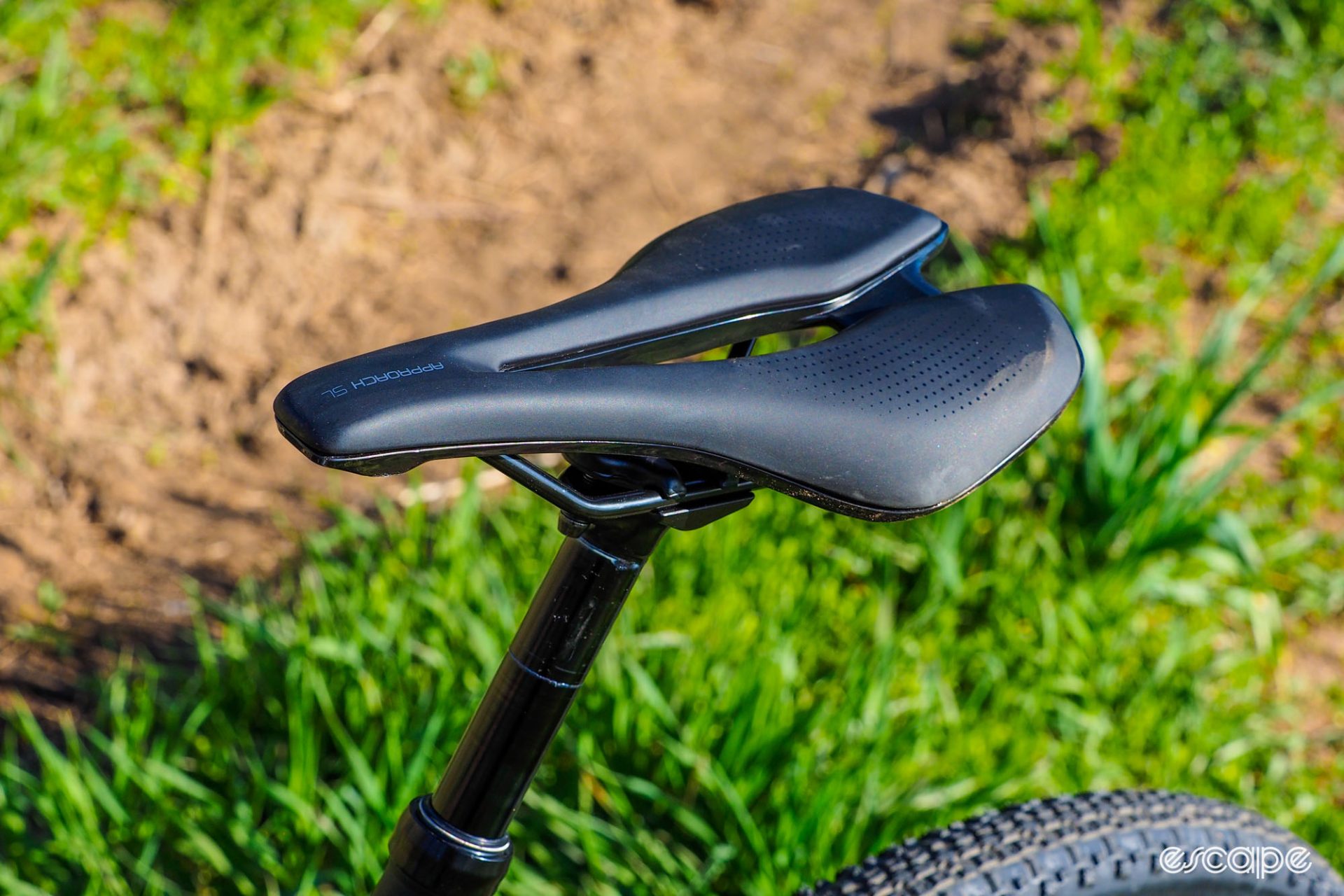

What did you think of this story?
